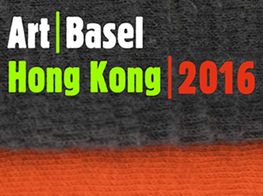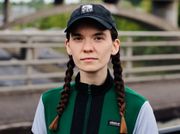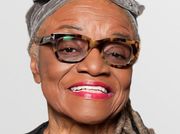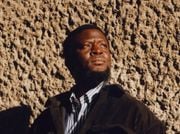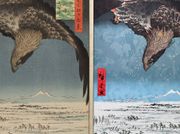Adeline Ooi
Adeline Ooi, Director Asia, Art Basel. ©Art Basel
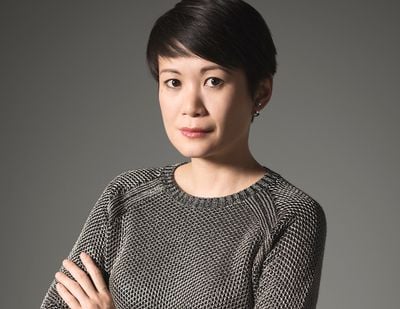
Adeline Ooi, Director Asia, Art Basel. ©Art Basel
Art Basel Hong Kong has started early this year. I don't mean just the dates, which have been pushed forward from May to March.
I mean inboxes are already flooded with invitations for previews and dinners taking place well ahead of the March 22 VIP preview. There are more events, more exhibitions, and certainly more collectors descending upon Hong Kong this time around. That's Adeline Ooi's job, to make sure Art Basel Hong Kong grows and gets bigger and better. How Ooi manages to keep her composure and sense of humour in light of the impending madness, is confounding. Grace under fire would be an apt way to describe this pixieish art powerhouse.
As director of Art Basel in Hong Kong, Ooi is in charge of the youngest and fastest growing of the Basel brand fairs, as well as bringing Asian presence to the other two fairs; Art Basel and Art Basel in Miami Beach. With extensive experience and contacts in South East Asia, Malaysian-born Ooi is well positioned for the challenging role. In 2013 and 2014 she was Art Basel's South East Asia VIP Relations Manager as well as director of RogueArt, a Malaysia-based cultural agency that she co-founded in 2009.
The thing about the Asian art scene is that there have been such different rates of development and some artists are more well-known than others, while other practices and movements are completely unknown because they existed at the time before there was a market.
Prior to that from 2006 to 2008, Ooi worked as curator and programme director of Valentine Willie Fine Art gallery in Kuala Lumpur. She's no stranger to Hong Kong either, and has watched the Hong Kong art scene grow from a cluster of local galleries on Hollywood Road, to an international art market in less than a decade. When things change in Hong Kong, they change quickly.
Much has been made of the significant dip in the art market in recent months. Auction houses have reported serious downturn in sales profits, and a chorus of nervous grumbles can be heard from dealers, usually happy to overstate sales. 'It's not an easy time, economically speaking', Ooi said at a recent UBS press gathering. 'Miami was a litmus test, but at the end of the day the galleries did well.'
While success remains to be seen, the 2016 edition of Art Basel in Hong Kong is delivering on its promise to be Asian in flavour. Out of 239 galleries participating more than half will be from Asia—including nine new Asian dealers including Singapore's Yeo Workshop, Taipei's Gallery 100, Shanghai's Longmen Art Projects, and Beijing's Ink Studio—and the fair will also host an Insights section dedicated to Asia. Over 50 museum groups will also be visiting this year, with a strong Asian contingent and a focus on Japan. A new expanded film section, will also be featured in the Art Basel programme, kicking off with a feature length film about the M+ Uli Sigg Collection, which is currently the subject of a major exhibition at ArtisTree in Hong Kong.
DAHow did you embark on a career in the art world?
AOI didn't grow up with a lot of art... I got the art bug sometime in my early teenage years at school in Singapore; I was a bit more exposed to it there. I studied fine art (Central Saint Martins) because I didn't know what else to do, but I knew I wanted to be in the art world. Then when I returned to South East Asia a friend opened a gallery and suggested I become the curator and eventually I founded RogueArt in 2009 with a couple of friends. Later I was asked to join Art Basel for VIP Relations, and now I'm director of Art Basel Asia. The experience in South East Asia has definitely helped right now, being part of the market and seeing how it developed.
DAYou've been in the role of director of Art Basel Asia for only two years [this being her second year], but what mark are you hoping to leave on the fair long term?
AOIt's a good question. I think this show is in a good spot. Personally, for me I would love to focus more on the Asian content because the whole Asian art scene—I mean there are different art scenes in Asia—but it's grown and developed so differently from the Western model. A lot of it has to do with the history of independence and the rapid economic development. The thing about the Asian art scene is that there have been such different rates of development and some artists are more well-known than others, while other practices and movements are completely unknown because they existed at the time before there was a market. And I think this is a great platform to reintroduce and rediscover some of this great content and practices that have been overlooked. The Asian market only boomed about 10 to 15 years ago, so what we're looking at is artists who are practicing right now or circulating around the primary or secondary market and there's still so much more that we haven't discovered, or that the market hasn't caught on to yet.
DAAre there specific challenges in the Asian market compared to the US or European ones?
AOThe thing about Asia is that it's paradoxical. I always use this metaphor that it's like a child that's pumped up on steroids whose vertebrae hasn't really formed. There's so much activity and it's so robust—despite economic downturn and all that—but it's generally in a state of growth. At the same time it's growing so quickly and it's still so young. Take for example the gallery system: a lot of people have started galleries without really understanding what it means to be a gallery, but they make do and feel their way along the process... the structures here are so different.
I think what we're dealing with is growth that's happening concurrently. There's a lot to do generally speaking, but anything and everything is possible. It's exciting but also messy. But at the same time that's also the challenge.
DAA child on steroids, particularly for Hong Kong, seems an apt description of the commercial and market growth. But arts culture seems to have lagged behind, in terms of institutions and infrastructure.
AOYes, exactly. You look at the market growth and it's incredible. Galleries have expanded and even younger galleries, like Magician Space in Beijing, they are young galleries, five years old. The time is so intense here. What a gallery can achieve in five years here is incredible. It probably took 20 years for a gallery to achieve this back in the day, but now everything and anything here is so accelerated.
It's exciting and scary. And you're right, a lot of it is happening on the market side, the financial side, whereas a lot of institutional and cultural spaces for art are still few and far between. I mean if you look at public spaces, and outreach and general awareness in the public of art, it's growing , but you need to be able to mold and shape it. It's a lot like a plant that has grown wild. You're really trying to prune and bring it all together so that it'll grow beautifully.
DAHow does the character of Hong Kong shape the development and character of this art edition of Art Basel? The city has a specific rhythm to it, its own set of cultural and political idiosyncrasies, as every city.
AOI think you're right. The fairs correlate to the environment they exist in. The Hong Kong show is the youngest version; it's also the one generating the most curiosity in the international art world. For example, this year we're getting so many more Americans and museum groups visiting. How does Hong Kong differ from Basel and Miami? Well I think definitely the Asian presence. It's the one fair that out of 239 galleries, half are galleries from Asia or working in Asia. So, that is one thing. And I think the face of the city and energy of it also contributes to a very different show, and I think what's exciting is to see how the show will grow.
I'm personally hoping that it will result in greater Asian material being presented by Asian galleries and I hope the galleries in the West will continue to take this market seriously and bring the best that they've got. It's difficult to forecast how the show will grow and evolve; it really depends on what's going on in the art environment as well.
I'm personally hoping that it will result in greater Asian material being presented by Asian galleries and I hope the galleries in the West will continue to take this market seriously and bring the best that they've got.
DAIt's interesting to see how the programmes for the various Art Basels have developed and differ. In Basel you have the Unlimited section—a separate section with very large scale works, or performances, that transcend the art booth format, and Parcours which engages the public with site specific works and installations around Basel. Tell me about the Hong Kong format?
AOIn Hong Kong we have the Insights section, which highlights the Asian curatorial themes and practices. I would love to have an Unlimited HK but that just doesn't seem possible right now. It's a one off for Basel. But who knows? I believe that it's about growing with the times, not just putting something out there for the sake of making it happen.
Let's see what else comes up in Hong Kong and what we can do. I would still love a public programme for the whole show. If you can leave something behind for the public... One very small effort of course is the ICC tower installation, this year by Japanese artist, Tatsuo Miyajima, which will light up on the 21st and kick off the Basel week and will continue to stay on until the end of April. If we can have more of that where it involves the city and its inhabitants, not just come in and out and disappear in five days.
DAYou also have an expanded new film programme. Can you tell me a little about this?
AOWe have two sections: One is a short film programme that will screen at the Hong Kong Arts Centre; and the other is feature length films that will screen at a theatre at the Hong Kong Convention Centre. Those are open to the public and they're free. I think the film programme is probably one of the best ways to reach out to members of the public. Sometimes you don't know what to do with art and you think, 'How am I supposed to react to it?' It can be daunting and you walk away. Whereas with film, there's a narrative and it tells a particular story, whether about an artist or a collector. It's a gentler and more accessible way into the art world. I'm hoping this is a good way of providing access to the public and that it will be informative.
We're bringing Takashi Murakami's Jellyfish Eyes, which we screened last year in Basel, to Hong Kong. It will be screened on Good Friday so I'm hoping it will be a good outing for family and kids.
DAWhile Basel is a commercial selling platform, set up originally by art gallerists, there seems to be an expectation in Hong Kong that the fair will also shape or influence the city's cultural landscape. Do you feel a pressure or responsibility in a way to contribute to this?
AODefinitely. I mean we would love to have more of a presence within the city outside of the fair week. I think this is still a young initiative and we're looking at how else to support cultural endeavours. Last year we supported the Hong Kong Art Gallery association week, and we're still looking at different ways of having activities outside of March, like the second part of the year.
We're interested in things to fit in in terms of education or education outreach, but we realise we can't do it alone. At the end of the day Art Basel is a fair and it's very much a market platform. It's also about banding together with other organisations. These are definitely areas that we're exploring for the Hong Kong show. Something like Event Horizon, for example, is a public art project that is wonderful for Hong Kong, but it also has to be meaningful and inspire people as well. —[O]

